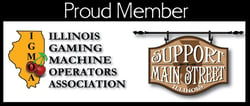In order to open your restaurant — and keep it open — you need to pass health inspections. But a clean kitchen is about more than just keeping it up to code. You also want to avoid the PR disaster of accidentally infecting your customers with a food-borne illness. It’s important to make sure your staff knows and adheres to food safety rules by setting health and safety policies and promoting a culture that values food safety.
Safety starts at the top
Kitchens are notoriously hectic, and staff might be tempted to take short cuts, especially as they near closing time. Your commitment to food safety needs to start at the top. Beyond creating food safety rules, kitchen leadership should strictly follow them, showing the rest of the staff that safety is valued.
Clear communication is key
Food safety training should be ongoing in your kitchen. Employees need to be aware of the rules and regulations, including the temperature food needs to be cooked to and stored at, how to identify questionable food, the importance of avoiding cross-contamination, and how often employees should be washing their hands. Beyond telling your staff what they need to do — and hanging proper signage throughout your kitchen — you should also explain why they need to do it. If your staff understands the stakes, they might be more likely to comply with your rules.
Stock up on supplies that prevent cross-contamination
One of the easiest ways to ensure your food is safe is to avoid cross-contamination. That means having separate cutting boards, knives, and food prep stations for raw meat, raw poultry, eggs, nuts, shellfish, and other allergens. Make things easy for your staff by stocking each food prep station with plenty of cutting boards and knives, so they never have an excuse to cross-contaminate. You may even consider buying color-coded knives and cutting boards, and assigning each food group a color like red for meat and green for raw produce.
Label everything
Keep your patrons safe and your restaurant out of trouble by labeling everything. When you open a bottle of juice or milk, mark the date somewhere on the bottle — but not on the cap because those are interchangeable. As soon as you open a wine bottle, label the back of the bottle so you don’t forget to do so later. When food arrives from suppliers, write down the temperature of the food so everyone knows it’s safe to cook.
Know your storage rules
Food, cleaning supplies and dinnerware all need to be stored according to very precise specifications. Make sure your staff knows that raw produce needs to be stored on the top shelf of your refrigerator, so raw meat or seafood can’t fall and contaminate it. Chemicals and cleaning supplies can’t be stored on the floor, so you’ll need to place them on a shelf and in a tub, so if it spills, it remains contained. And glasses need to be stored upside down to keep dust and other pathogens from settling inside.
Keep it clean
As you move things around in your kitchen and get comfortable in the space, don’t forget the basics. The room temperature and ventilation need to remain well-maintained in the kitchen, and the FDA requires that all vapors and fumes be vented outside. Your kitchen also likely needs to meet federal and local fire codes, so be sure to stay up to date on those regulations as well. And never forget to clean each workspace, the sinks, counters, eating areas, garbage cans and even the exterior of the building.
Is your kitchen squeaky clean and up to code? Prep your patio or outdoor dining area with these tips from Accel.



_1200x675.jpg)

_121_Full%20Color_ON%20BLACK-01.png?width=267&name=AE_MultiLogo(H)_121_Full%20Color_ON%20BLACK-01.png)
